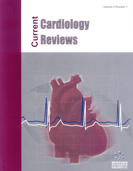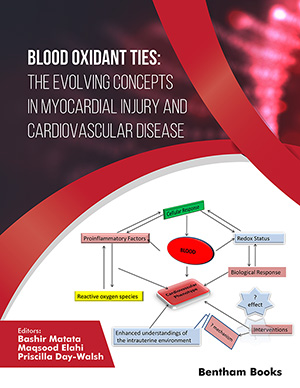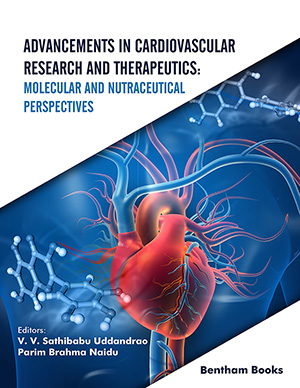Abstract
Background: Preeclampsia (PE) is a pregnancy complication with serious maternal and neonatal consequences worldwide. Our understanding of PE pathophysiology has significantly evolved over the last decades by recognizing that endothelial dysfunction and systemic inflammation, with an associated angiogenic imbalance, are key pieces of this incomplete puzzle. In the present era, where no single treatment to cure or treat this obstetric condition has been developed so far, PE prevention and early prediction are the most useful clinical approach to reduce the PE burden.
Introduction: Although most PE episodes occur in healthy nulliparous women, the identification of specific clinical conditions that increase the risk of PE dramatically provides a critical opportunity to improve outcomes by acting on potentially reversible factors, and also contributes to better understand this pathophysiologic enigma.
Methods: Pertinent studies were searched in PubMed/Medline and Google Scholar (updated August 2020) using common keywords applied in the field of preeclampsia, inflammation and endothelial dysfunction. Given the design of this work as a narrative review, no formal criteria for study selection or appraisal were utilized.
Conclusion: In this review, we highlight major clinical contributors of PE and shed light on their potential link with endothelial dysfunction and inflammation.
Keywords: Preeclampsia, risk factors, cardiovascular system, endothelial dysfunction, inflammation, inflammasome.
[http://dx.doi.org/10.1016/j.jri.2017.09.006] [PMID: 28941881]
[http://dx.doi.org/10.1053/j.semperi.2011.09.011] [PMID: 22280867]
[http://dx.doi.org/10.1016/j.preghy.2018.05.004] [PMID: 29803330]
[PMID: 31241598]
[http://dx.doi.org/10.1136/bmj.38380.674340.E0] [PMID: 15743856]
[http://dx.doi.org/10.1136/bmj.i1753] [PMID: 27094586]
[http://dx.doi.org/10.3389/fphys.2018.01838] [PMID: 30618843]
[http://dx.doi.org/10.2174/1573397115666181126105318] [PMID: 30474532]
[http://dx.doi.org/10.1155/2018/2180373] [PMID: 30271792]
[http://dx.doi.org/10.1081/PRG-120021060] [PMID: 12908998]
[http://dx.doi.org/10.2215/CJN.12081115] [PMID: 27094609]
[http://dx.doi.org/10.1053/plac.2001.0676] [PMID: 11373150]
[http://dx.doi.org/10.1016/0029-7844(96)00045-2] [PMID: 8649698]
[http://dx.doi.org/10.1186/s12884-017-1540-0] [PMID: 29017467]
[http://dx.doi.org/10.1016/j.jacc.2017.04.025] [PMID: 28461007]
[http://dx.doi.org/10.1056/NEJM199809033391004] [PMID: 9725924]
[http://dx.doi.org/10.1161/HYPERTENSIONAHA.107.107565] [PMID: 18259010]
[http://dx.doi.org/10.1371/journal.pmed.1002926] [PMID: 31574092]
[http://dx.doi.org/10.2337/dc20-S014] [PMID: 31862757]
[http://dx.doi.org/10.1056/NEJMoa042973] [PMID: 15951574]
[http://dx.doi.org/10.1038/s41574-019-0197-3] [PMID: 30948803]
[http://dx.doi.org/10.1056/NEJMoa0902430] [PMID: 19797280]
[http://dx.doi.org/10.1371/journal.pone.0092485] [PMID: 24658089]
[http://dx.doi.org/10.1136/heartjnl-2014-306754] [PMID: 25801001]
[http://dx.doi.org/10.1016/j.orcp.2020.01.004] [PMID: 32035840]
[http://dx.doi.org/10.1016/j.rdc.2016.12.009] [PMID: 28390564]
[http://dx.doi.org/10.1177/0961203310397967] [PMID: 21543513]
[http://dx.doi.org/10.7326/L15-0500] [PMID: 26784479]
[http://dx.doi.org/10.1155/2018/2413637] [PMID: 30255104]
[http://dx.doi.org/10.2215/CJN.09250914] [PMID: 26487769]
[http://dx.doi.org/10.1016/S0140-6736(79)91996-2] [PMID: 87824]
[http://dx.doi.org/10.1016/S0140-6736(07)60712-0] [PMID: 17512048]
[http://dx.doi.org/10.1002/uog.18816] [PMID: 28741785]
[http://dx.doi.org/10.1016/j.ajog.2004.09.029] [PMID: 15671997]
[http://dx.doi.org/10.1016/j.ajpath.2016.08.010] [PMID: 27750048]
[http://dx.doi.org/10.1002/14651858.CD001059.pub5] [PMID: 30277579]
[http://dx.doi.org/10.4103/IJCIIS.IJCIIS_33_17] [PMID: 28971026]
[http://dx.doi.org/10.1155/2011/214365] [PMID: 21547086]
[http://dx.doi.org/10.1161/CIRCOUTCOMES.116.003497] [PMID: 28228456]
[http://dx.doi.org/10.1136/bmj.l1516] [PMID: 31036557]
[http://dx.doi.org/10.1016/j.jacc.2020.03.028] [PMID: 32381164]
[http://dx.doi.org/10.1161/HYPERTENSIONAHA.119.14221] [PMID: 32008431]
[http://dx.doi.org/10.1161/CIRCULATIONAHA.110.941203] [PMID: 20644018]
[http://dx.doi.org/10.7326/M17-2740] [PMID: 29971437]
[http://dx.doi.org/10.1016/j.jacc.2019.09.052] [PMID: 31727424]
[http://dx.doi.org/10.1007/s11883-020-0830-6] [PMID: 32078066]
[http://dx.doi.org/10.1093/cvr/cvu018] [PMID: 24532051]
[http://dx.doi.org/10.1089/jwh.2018.7480] [PMID: 31408425]
[http://dx.doi.org/10.1016/0002-9378(89)90665-0] [PMID: 2589440]
[http://dx.doi.org/10.1161/CIRCRESAHA.118.313237] [PMID: 30355249]
[http://dx.doi.org/10.1172/JCI17189] [PMID: 12618519]
[http://dx.doi.org/10.1038/nm1429] [PMID: 16751767]
[http://dx.doi.org/10.3390/ijms20174246] [PMID: 31480243]
[http://dx.doi.org/10.1056/NEJMoa055352] [PMID: 16957146]
[http://dx.doi.org/10.1152/ajpheart.00922.2007] [PMID: 18192215]
[http://dx.doi.org/10.1097/CAD.0b013e3283161012] [PMID: 19343005]
[http://dx.doi.org/10.1093/ndt/gft465] [PMID: 24302609]
[http://dx.doi.org/10.1152/ajpregu.00373.2015] [PMID: 26511523]
[http://dx.doi.org/10.1161/HYPERTENSIONAHA.111.00841] [PMID: 23509076]
[http://dx.doi.org/10.1016/j.preghy.2018.10.002] [PMID: 30527110]
[http://dx.doi.org/10.1016/j.placenta.2014.07.014] [PMID: 25149386]
[http://dx.doi.org/10.1016/S0735-1097(01)01746-6] [PMID: 11788217]
[http://dx.doi.org/10.1161/CIRCULATIONAHA.106.678276] [PMID: 17452608]
[http://dx.doi.org/10.1016/j.ijcard.2012.09.047] [PMID: 23041097]
[PMID: 10070064]
[http://dx.doi.org/10.1016/S0140-6736(03)13177-7] [PMID: 12737861]
[http://dx.doi.org/10.1155/2015/250951] [PMID: 26421317]
[http://dx.doi.org/10.1155/2015/720683] [PMID: 26351578]
[http://dx.doi.org/10.1161/HYPERTENSIONAHA.115.06554] [PMID: 26711737]
[http://dx.doi.org/10.1161/01.HYP.0000186328.90667.95] [PMID: 16230524]
[http://dx.doi.org/10.3389/fcvm.2019.00166] [PMID: 31803759]
[http://dx.doi.org/10.1161/CIRCULATIONAHA.109.895458] [PMID: 20644016]
[http://dx.doi.org/10.1301/nr.2007.dec.S194-S202] [PMID: 18240548]
[http://dx.doi.org/10.1016/0167-5699(93)90235-D] [PMID: 8363725]
[http://dx.doi.org/10.1111/j.1600-6143.2005.00892.x] [PMID: 15888026]
[http://dx.doi.org/10.3389/fimmu.2014.00253] [PMID: 24904596]
[http://dx.doi.org/10.1111/j.1749-6632.2010.05938.x] [PMID: 21401634]
[http://dx.doi.org/10.1111/j.1600-0897.2010.00831.x] [PMID: 20331588]
[http://dx.doi.org/10.1016/j.coph.2011.01.003] [PMID: 21317038]
[http://dx.doi.org/10.1016/j.genm.2008.03.013]
[http://dx.doi.org/10.1016/j.placenta.2008.11.003]
[http://dx.doi.org/10.1038/nature11462] [PMID: 23023128]
[http://dx.doi.org/10.1007/s00281-016-0579-8] [PMID: 27339196]
[http://dx.doi.org/10.1155/2016/7154524] [PMID: 27294162]
[http://dx.doi.org/10.1111/j.1600-0897.2011.01019.x] [PMID: 21623995]
[http://dx.doi.org/10.1002/jcla.22834] [PMID: 30666720]
[http://dx.doi.org/10.1016/j.placenta.2009.11.005] [PMID: 19948358]
[http://dx.doi.org/10.1007/s11906-007-0088-1] [PMID: 18367011]
[http://dx.doi.org/10.1016/j.jri.2017.09.002]
[http://dx.doi.org/10.1038/nrcardio.2017.161] [PMID: 29143812]
[http://dx.doi.org/10.3389/fendo.2020.00008] [PMID: 32047476]
[http://dx.doi.org/10.1126/science.1184003] [PMID: 20075245]
[http://dx.doi.org/10.1111/j.1600-0897.2010.00960.x] [PMID: 21352397]
[http://dx.doi.org/10.1371/journal.pone.0129095] [PMID: 26053021]
[http://dx.doi.org/10.3109/17435390.2014.956156] [PMID: 25211550]
[http://dx.doi.org/10.1111/cei.13130] [PMID: 29683202]
[http://dx.doi.org/10.1016/j.placenta.2007.11.001]
[http://dx.doi.org/10.1097/MD.0000000000015462] [PMID: 31045822]
[http://dx.doi.org/10.1111/j.1471-0528.2006.00908.x] [PMID: 16553648]
[http://dx.doi.org/10.1016/j.tjog.2018.10.002] [PMID: 30545527]
[http://dx.doi.org/10.1016/j.abb.2020.108255] [PMID: 31904364]
[http://dx.doi.org/10.1016/j.tem.2014.12.004] [PMID: 25600292]
[http://dx.doi.org/10.1038/nrm.2017.125] [PMID: 29339798]
[http://dx.doi.org/10.3389/fphys.2016.00098] [PMID: 27047385]
[http://dx.doi.org/10.1371/journal.pone.0079636] [PMID: 24244532]
[http://dx.doi.org/10.1182/blood-2016-03-705434] [PMID: 27589872]
[http://dx.doi.org/10.1111/j.1600-0897.2006.00435.x] [PMID: 17076679]
[http://dx.doi.org/10.1186/1559-0275-11-40] [PMID: 25469110]
[http://dx.doi.org/10.1096/fj.13-239053] [PMID: 24812088]
[http://dx.doi.org/10.1016/j.placenta.2013.02.004] [PMID: 23465879]
[http://dx.doi.org/10.3109/10641955.2013.858745] [PMID: 24304210]
[http://dx.doi.org/10.2174/1389201019666180808162011] [PMID: 30091406]
[http://dx.doi.org/10.1038/sj.ejhg.5201698] [PMID: 16868559]
[http://dx.doi.org/10.1161/CIRCULATIONAHA.108.772491] [PMID: 18490534]
[http://dx.doi.org/10.1111/bph.13230] [PMID: 26103560]
[http://dx.doi.org/10.1124/jpet.105.088435] [PMID: 16183707]
[http://dx.doi.org/10.3109/10641955.2015.1115063] [PMID: 26930132]
[http://dx.doi.org/10.3109/10641955.2013.837175] [PMID: 24354578]
[http://dx.doi.org/10.1111/aji.12339] [PMID: 25394884]
[http://dx.doi.org/10.1095/biolreprod.113.116186] [PMID: 24759787]
[http://dx.doi.org/10.1152/ajpregu.00178.2015] [PMID: 26447211]
[http://dx.doi.org/10.1002/jcph.179] [PMID: 24030923]
[http://dx.doi.org/10.1002/cbf.3458] [PMID: 31746004]
[http://dx.doi.org/10.1007/s11596-009-0519-0] [PMID: 19821099]
[http://dx.doi.org/10.1016/j.regpep.2010.12.007] [PMID: 21237211]
[http://dx.doi.org/10.3892/mmr.2017.7797] [PMID: 29039567]
[http://dx.doi.org/10.1016/j.placenta.2012.05.006] [PMID: 22695104]
[http://dx.doi.org/10.1002/oby.22734] [PMID: 32020775]
[http://dx.doi.org/10.1038/nm.2279] [PMID: 21217695]
[http://dx.doi.org/10.1155/2012/347141] [PMID: 22500087]
[http://dx.doi.org/10.1016/j.jri.2018.04.002] [PMID: 29689494]
[http://dx.doi.org/10.3390/cells8111389] [PMID: 31694192]
[http://dx.doi.org/10.1159/000488242] [PMID: 29998123]
[http://dx.doi.org/10.1681/ASN.2010020143] [PMID: 20688930]
[http://dx.doi.org/10.1681/ASN.2009010061] [PMID: 19608702]
[http://dx.doi.org/10.1159/000341264] [PMID: 22906914]
[http://dx.doi.org/10.1056/NEJMoa1414838] [PMID: 26735990]
[http://dx.doi.org/10.1016/j.preghy.2019.09.013] [PMID: 31585347]
[http://dx.doi.org/10.1007/s00404-014-3243-3] [PMID: 24748339]
[http://dx.doi.org/10.3892/ijmm.2020.4465] [PMID: 31985028]
[http://dx.doi.org/10.1007/s00011-019-01246-8] [PMID: 31143973]





















